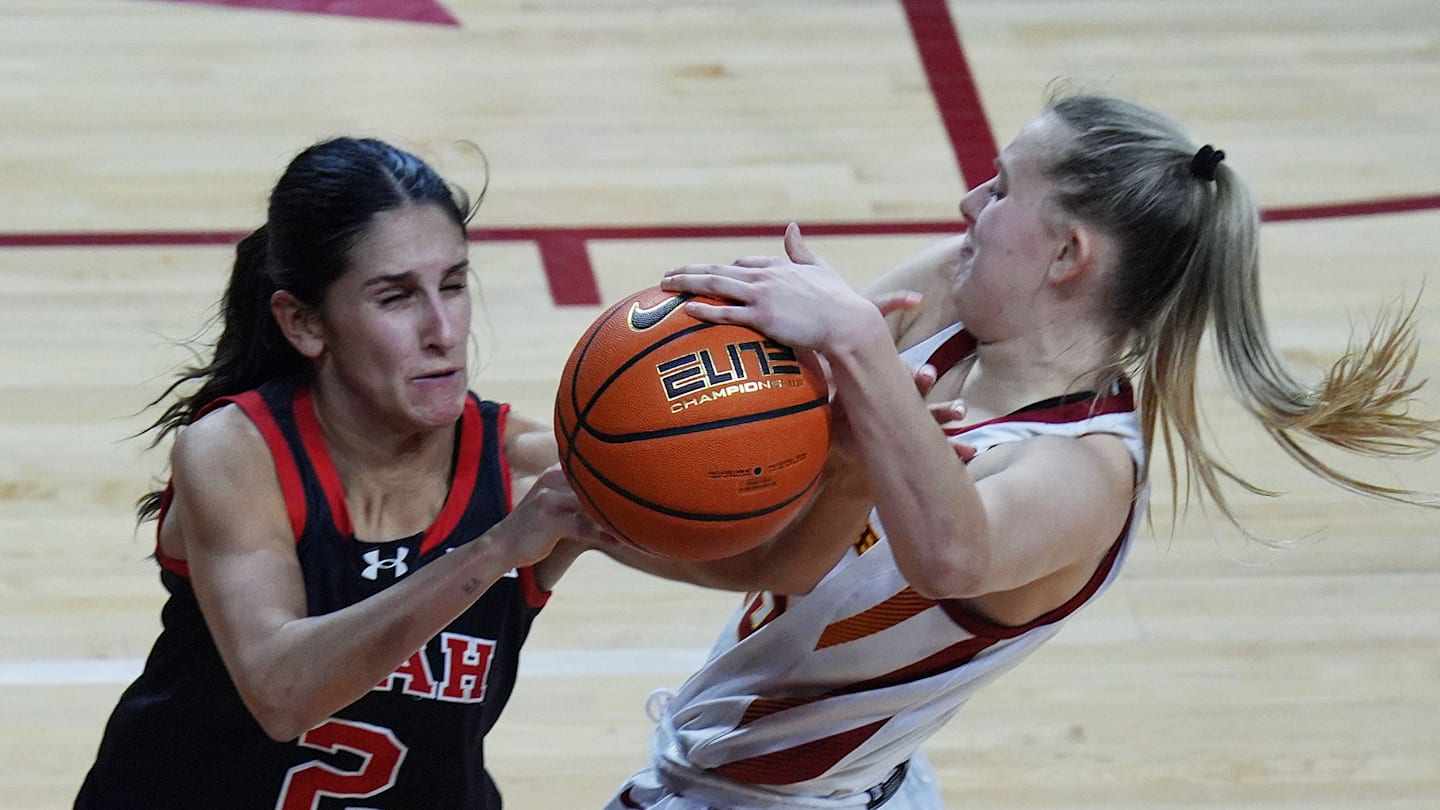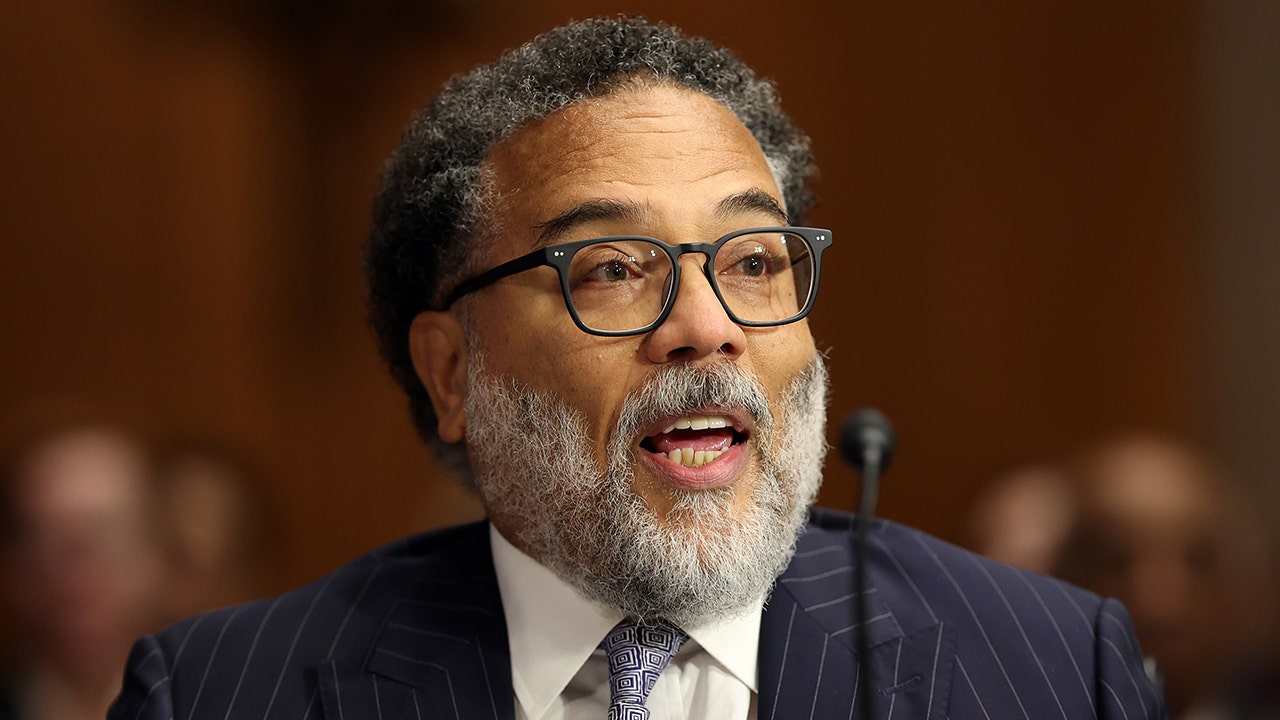Utah
Opinion: Nature and human health in Utah — keeping life elevated
Spending time in nature reduces stress, anxiety and depression and increases cognition, activity and physical health. It also leads to economic benefits. The Kem C. Gardner Institute reports that the quality of life afforded by outdoor recreation is the No. 1 reason employees in the tech sector move to and stay in Utah. Because of the economic contribution of outdoor recreation — at $8.1 billion annually — Utah became the first state to have a Division of Outdoor Recreation.
In Salt Lake City, many are fortunate to have ready access to outstanding nature and recreation because of its world-class skiing, hiking and biking opportunities across the state. Equitable access to the great outdoors and keeping it safe and healthy for all should be an imperative for the good of Utah and its residents.
Unfortunately, the facts suggest this is not the case. According to Trust for Public Land, residents on the west side of the Salt Lake Valley have significantly less access to parks and public lands than residents on the east side. People on the west side are at greater risk for poor environmental and human health outcomes.
Although the frequency of poor air quality days has decreased in the last two decades, the Central Wasatch Commission reports that there is plenty of room for improvement. The risk of the Great Salt Lake drying up and toxic dust blowing up from the lake bed may render time outdoors dangerous instead of beneficial.
Efforts to keep our extraordinary natural environment healthy and accessible to all are not easily addressed, as they involve the complicated workings of municipal, state and federal governments. Organizations across Utah are increasing awareness and advocating for policies to improve the current state of the environment in Utah to maintain its reputation as a destination for outdoor recreation.
One of these organizations is Nature and Human Health – Utah, or NHH-UT, whose aims are to strengthen and unify the voices of organizations who value the great outdoors that “elevate” life in Utah. Founded in 2019, its mission is to understand, articulate and foster relationships between nature and human health by providing a collaborative arena to engage, formulate actions and implement solutions for people and nature in Utah. It connects organizations that recognize the power of nature for health and desire equal access of nature for all and carries out actions to improve environmental quality across the state.
In 2024, NHH-UT awarded nine pilot grants to carry out cross-sectional research and programs projects. These assess the barriers to nature that some populations face, study how exposure to nature affects mental health and well-being, help people unfamiliar with nature to feel comfortable with it and plant trees in neighborhoods that lack adequate canopy for health. Community groups and researchers supported by NHH-UT pilot grants are making headway in understanding the role of nature in our health and well-being and making sure everyone has equal access to it.
Every reader can contribute to expanding and deepening the connections between nature and human health in our community. If you like to get your hands in the soil, you can participate in tree plantings coordinated by the nonprofit group TreeUtah or grow your own vegetables in a community garden plot at the Wasatch Community Gardens or the Salt Lake City Public Library. If you’d like to help diverse groups enjoy the foothills and mountains, you can volunteer with Camping in Color or Wasatch Adaptive Sports. If you’re passionate about improving the health of our environment, consider attending one of HEAL Utah’s community lobbying training programs. Or, simply make time to take a walk in one of our dozens of urban pocket parks to reinforce the values of being in nature.
Together we can create a culture that values the future of the interaction between the environment and human health.
Dorothy (Dart) Schmalz is the co-leader of NHH-UT and professor/chair of the Department of Parks, Recreation and Tourism at the University of Utah. In her research and teaching, she focuses on the life side of the work-life balance equation in supporting health and well-being for people of all walks of life.
Myra Gerst, NHH-UT’s program manager, has worked in preventative public health programming throughout her career. She coordinates public engagement, management of the pilot grant program and facilitating opportunities for nature-based programming within the community.
Nalini Nadkarni, co-leader of NHH-UT and professor emerita at the University of Utah, has interwoven research on forest canopy biota with innovative public engagement throughout her career. She collaborates with faith-based groups, artists, corporations and people who are incarcerated to engage with those who do not or cannot gain access to science education and nature.
Tim Brown, co-leader of NHH-UT and president/CEO at Tracy Aviary since 2005, pays particular attention to preserving a landscape and atmosphere that is an oasis in the middle of the city. Providing opportunities for people to connect with nature is his lifelong passion.

Utah
Utah State Running Back Transfer Commits To South Carolina Over Florida State

Florida State came up short in its pursuit of a top running back transfer.
On Tuesday, Utah State running back transfer Rahsul Faison announced he was committing to South Carolina. Faison chose the Gamecocks over FSU, Alabama, North Carolina, UCLA, and UCF.
The Seminoles hosted Faison for a visit last weekend but he continued to take trips elsewhere. Florida State could very well kick the tires on another transfer during the spring window.
Faison spent two seasons with the Aggies and had a career year in 2024 where he rushed 198 times for 1,109 yards and eight touchdowns while catching 22 passes for 99 yards. He had five games of 100+ rushing yards, including a season-high 20 carries for 191 yards and a touchdown in a 55-10 victory against Hawaii on November 16. He was named second-team All-Mountain West for his performance last fall.
During his first season at Utah State, Faison rushed 118 times for 736 yards and five touchdowns. In total, he appeared in 25 games, making 13 starts, and totaled 316 carries for 1,845 yards and 13 touchdowns. Faison also caught 33 passes for 151 yards.
The Pennsylvania native signed with Marshall as a two-star prospect in 2019. He ultimately spent that season at the junior college level at Lackawanna College and was with the Thundering Herd in 2020. Faison didn’t appear in a game with either program and elected to go back to the JUCO level with Snow College. He rushed 88 times for 355 yards and six touchdowns prior to transferring to Utah State.
The 5-foot-11, 200-pound running back has at least one season of eligibility remaining due to the new junior college ruling.
READ MORE: Elite FSU Quarterback Commitment Gets First Chance To Meet New OC Gus Malzahn
Florida State has six scholarship running backs eligible to return in 2025; redshirt senior Roydell Williams, redshirt senior Caziah Holmes, redshirt junior Jaylin Lucas, redshirt sophomore Samuel Singleton Jr., sophomore Kam Davis, and redshirt freshman Micahi Danzy.
The Seminoles signed four-star Ousmane Kromah during the Early Signing Period.
READ MORE: Standout Utah State Running Back Transfer Lists Florida State In Top-Six
Stick with NoleGameday for more FREE coverage of Florida State Football throughout the offseason
Follow NoleGameday on and Twitter, Facebook, Instagram, and TikTok
• Florida State Adds FCS Quarterbacks Coach To Off-Field Staff
• Florida State Lands Explosive Tennessee Wide Receiver Transfer Squirrel White
• Florida State Secures Veteran Memphis Linebacker Transfer Elijah Herring
• Former FSU Defensive End, Seminole Legacy Transferring To Third School In Three Years
Utah
Utah junior high teacher arrested for alleged possession of child porn

PROVO, Utah — A teacher within the Alpine School District is facing charges of sexual exploitation of a minor after allegedly uploading child porn to the internet. Travis Adamson, 49, is currently being held without bail.
According to court documents obtained by FOX 13 News, investigators were first notified of the potential crime at the end of April 2023. Adobe Inc. reported to the National Center for Missing and Exploited Children via CyberTip that a user had uploaded files containing depictions of minors engaging in sexually explicit conduct on their account.
The CyberTip also included account information regarding the suspect user, including an IP address and email address that belonged to a teacher within the Alpine School District. Detectives used geo-location to trace the suspect’s IP address and found it was located within or near the city limits of Provo.
The school district confirmed to investigators that Adamson was still an employee within the district.
On Monday, detectives interviewed Adamson at the school where he confirmed that he was the sole user of the Adobe account and admitted to viewing child sexual abuse material.
Adamson also told detectives that he had downloaded several thousand images and videos onto his hard drive which is located at his home. He denied ever photographing or doing anything sexual or inappropriate with his students or other kids.
Detectives are now working to get access to Adamson’s hard drive and more charges could be coming.
Utah
Utah cracks AP Top 25 Women’s Basketball poll before key matchups

The Utah Utes have made headlines by cracking the AP Top 25 at No. 22 for the first time this season, following a hard-fought 75-67 win over Iowa State. This marks Utah’s third consecutive season being ranked, despite an unexpected coaching change early in the season. Head coach Lynne Roberts departed for the WNBA, leaving longtime assistant Gavin Petersen to step in. Under Petersen’s leadership, Utah has thrived, demonstrating resilience and cohesion.
Petersen credited the team’s ability to stay focused and overcome adversity. “Our resilient crew has stepped up and faced the adversity that’s in front of them,” Petersen said. Utah’s win over Notre Dame during a Thanksgiving tournament was a pivotal moment that signaled their strength and potential.
Utah has ‘big money’ problem with a billionaire calling NIL shots for rival
The competition for dominance in women’s college basketball continues to intensify as the Big Ten and SEC assert themselves as the sport’s premier leagues. This week’s Associated Press Top 25 women’s basketball poll highlights the strength of both conferences, with each boasting seven ranked teams, including four in the top 10.
The Big Ten’s recent expansion with the addition of No. 1 UCLA and No. 4 USC has bolstered its claim as the top league. UCLA’s consistent performances, including a victory over South Carolina, solidify their place at the top of the rankings, earning 30 of 32 first-place votes. Meanwhile, the SEC has also grown stronger with No. 5 Texas and No. 10 Oklahoma joining the conference. South Carolina, a perennial powerhouse, remains No. 2 and will face Texas in a highly anticipated showdown.
This week, the Utes prepare for a marquee matchup, hosting No. 12 Kansas State at the Huntsman Center. This game not only pits two top-25 teams against each other but also serves as a litmus test for Utah’s aspirations in the Big 12.
As Utah continues its unbeaten run in conference play, upcoming matchups against No. 11 TCU and No. 17 West Virginia will provide further opportunities to climb the rankings and solidify their standing among the nation’s elite.
-

 Business7 days ago
Business7 days agoThese are the top 7 issues facing the struggling restaurant industry in 2025
-

 Culture7 days ago
Culture7 days agoThe 25 worst losses in college football history, including Baylor’s 2024 entry at Colorado
-

 Sports6 days ago
Sports6 days agoThe top out-of-contract players available as free transfers: Kimmich, De Bruyne, Van Dijk…
-

 Politics5 days ago
Politics5 days agoNew Orleans attacker had 'remote detonator' for explosives in French Quarter, Biden says
-

 Politics5 days ago
Politics5 days agoCarter's judicial picks reshaped the federal bench across the country
-

 Politics3 days ago
Politics3 days agoWho Are the Recipients of the Presidential Medal of Freedom?
-

 Health2 days ago
Health2 days agoOzempic ‘microdosing’ is the new weight-loss trend: Should you try it?
-

 World7 days ago
World7 days agoIvory Coast says French troops to leave country after decades


















